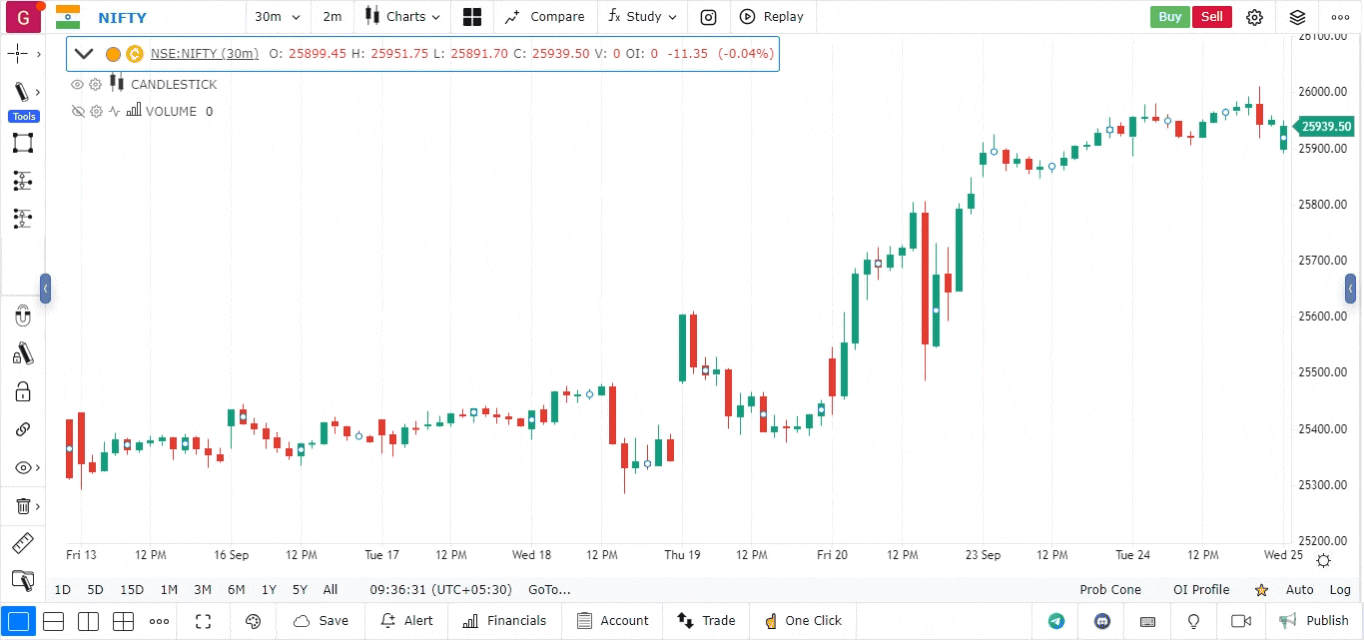Elliott Triangle Wave
The Elliott Triangle Wave is a technical analysis pattern used to identify periods of consolidation in the market, indicating that a breakout may follow. It typically forms during the corrective phases of an Elliott Wave sequence. The pattern consists of five sub-waves labeled as A, B, C, D, and E, which move sideways in a converging manner.
How to Use the Elliott Triangle Wave Tool
Follow these steps to utilize the Elliott Triangle Wave drawing tool from the patterns section:
-
Access Platform:
- Open the platform and log in to your account.
- Load the chart of the asset you wish to analyze.
-
Select Chart Type:
- Ensure the chart is set to the Candlestick type to provide a clear view of price movements.
-
Navigate to Drawing Tools:
- Locate the Drawing Tools section on the platform interface, usually available on the toolbar or sidebar.
- Click on the drawing tools icon to expand the list of available tools.
-
Open the Patterns Section:
- Within the drawing tools menu, find the Patterns section, where you will see various pattern drawing tools.
- This section includes a variety of technical patterns, including those specific to Elliott Wave Theory.
-
Select the Elliott Triangle Tool:
- Choose the Elliott Triangle Wave tool from the patterns list.
- This tool allows you to plot the five-wave structure (A-B-C-D-E) of the triangle on your chart.
-
Plot the Elliott Triangle Waves:
- Start by clicking on the chart to mark the beginning of Wave A.
- Continue to plot each wave in sequence, labeling them as A, B, C, D, and E.
- The tool will help you draw the converging lines that represent the boundaries of the triangle.
-
Adjust the Wave Labels:
- Modify the position of each wave point to accurately fit the market’s price action.
- Ensure that the triangle’s trendlines show a clear converging pattern as they approach the apex.
-
Analyze the Pattern:
- Study the pattern to determine the breakout direction. Triangles generally indicate a continuation of the previous trend, but they can also lead to reversals in some cases.
- Watch for a breakout of the price beyond the triangle’s boundaries to identify potential trading opportunities.
